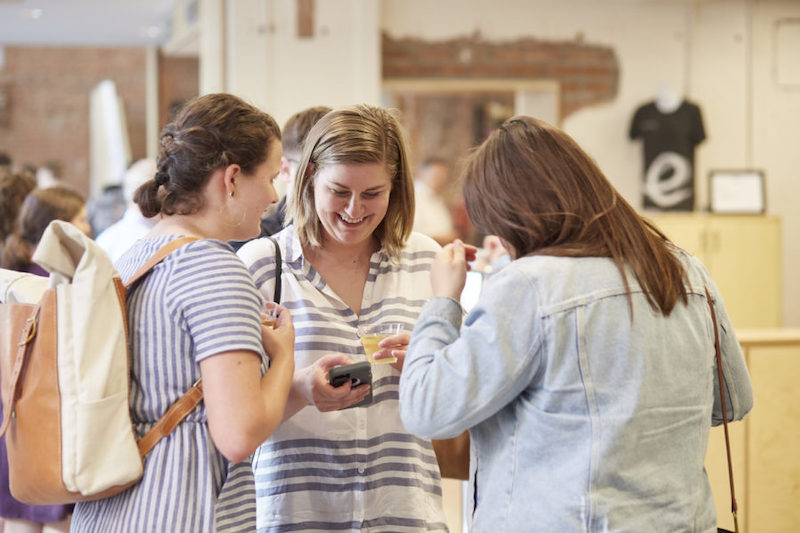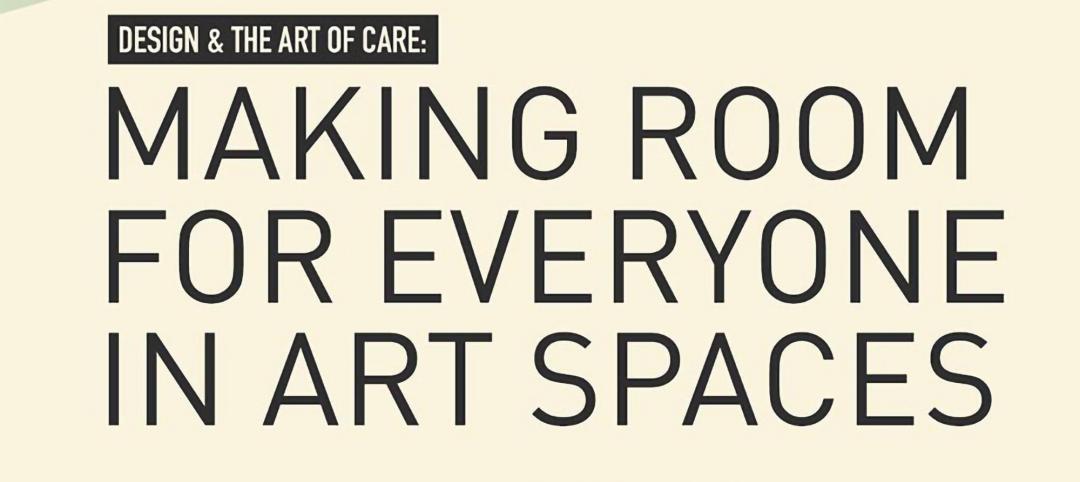If COVID-19 is showing us anything, it is putting the necessity of our social networks front and center. Yes, we are working from home pinging people with social chatter occasionally or attending Zoom Happy Hours or stopping by the Open Zoom Room Café virtually. At the core though, we are seeking to replace face to face connections any way we can.
Overcoming isolation isn’t just about the technological face to face, it is about finding meaningful connection and “togetherness”.
Many Generation Z students have been arriving on campus on their own islands. Their high school friendships are easier to maintain because of technology. Making new friends is uncomfortable. With just over 50% of people being naturally introverted, this can be even more difficult. We have heard reports from many student affairs professionals that students surveyed increasingly report being unhappy or not belonging.
Happiness isn’t something bestowed or bought. In fact, over the last decade in the United States the standard of living has improved, but general wellbeing has declined.
 General happiness, U.S. adults, General Social Survey, 1973-2016 World Happiness Report, 2019.
General happiness, U.S. adults, General Social Survey, 1973-2016 World Happiness Report, 2019.
Yale University has tapped into this phenomenon. The most popular class in their 317-year history is Psychology and the Good Life. It is so successful they are offering it for free through Coursera to everyone as The Science of Wellbeing. It helps an individual reduce stress and anxiety by helping them identify where dissatisfaction is coming from.
Core to its success is a simple realization – improving wellbeing takes daily, intentional effort over long periods.
According to the World Happiness Report 2019, university first-year students today have reported the lowest levels of general happiness in years. Student Affairs professionals have been actively working on programming and engagement activities to reverse this trend by minimizing feelings of isolation, anxiety, depression, and the desire to self-harm.
 General happiness, U.S. 8th, 10th, and 12th graders (ages 13 to 18), Monitoring the Future, 1991 – 2017 World Happiness Report, 2019.
General happiness, U.S. 8th, 10th, and 12th graders (ages 13 to 18), Monitoring the Future, 1991 – 2017 World Happiness Report, 2019.
Studies are showing decreasing screen time increases connectedness. One group of students limited social media use to 30 minutes a day compared to a non-limited control group. Those who limited their use were less lonely and less depressed over the course of several weeks.
Another reason can simply be a matter of time – there are only so many hours in the day. If individual digital use goes up, something else goes down – getting together with friends, socializing and going to parties, exercising, sleeping. The average 12th grader spends more than 6 hours a day of leisure time on just three digital media activities – internet, social media, and texting.
 Time spent on the internet, sleeping more than 7 hours/night, frequency of in-person social interaction, and general happiness, standardized (Z) scores, 8th and 1)th graders, Monitoring the Future, 2006-2017 World Happiness Report, 2019
Time spent on the internet, sleeping more than 7 hours/night, frequency of in-person social interaction, and general happiness, standardized (Z) scores, 8th and 1)th graders, Monitoring the Future, 2006-2017 World Happiness Report, 2019
Feelings of inferiority are a known link to depression. Student Life programming is chipping away at this phenomenon by helping students improve self-esteem, focus on personal interests, find new passions, and spend less time comparing themselves to others’ social media “highlight reels”.
Covid 19 is helping us (by force) find a new normal – a different balance. The need to physically isolate ourselves to prevent a virus from spreading is forcing all our daily activity into one location. The rigor of a routine and minimizing the variables is helping us acknowledge what really makes us feel good. We are creating time and zones for different things: work, getting outside, family time, and simply unwinding. We aren’t looking for everything to be in one place. Flexibility and freedom of work environment is helping us realize what physical surroundings we need to accomplish tasks. But we are also finding general happiness and wellbeing in simple things. Focusing on how we enjoy leisure is helping us get through this isolation.
 Correlation between activities and general happiness, 8th and 10th graders, Monitoring the Future, 2013-2016 World Happiness Report, 2019.
Correlation between activities and general happiness, 8th and 10th graders, Monitoring the Future, 2013-2016 World Happiness Report, 2019.
So, if leisure is essential to wellbeing and face to face interactions are healthy, how do we encourage more of it on a college campus?
Online work and connection are not all bad. But we can’t get everything we need online. We are working with student affairs professionals and academic experts on college campuses as we design the physical spaces within which students interact Students arriving on campus are at different spots on their journey to independence. Not all first years are the same, therefore, spaces for student engagement are not a one size fits all endeavor.
When a measure of success for a project is a forging of new relationships and a deepening of existing ones, we deploy our insights on Common Space to deliver space that meets these measures. Social interactions between friends are different than those of new people meeting for the first time. The physical characteristics of spaces can nurture or impede these interactions.
At Case Western Reserve University (CWRU), they are transforming education for every first-year engineering student, and doing it in a way that harnesses two Gen Z strengths: 1) a desire to make a measurable difference in something they care about and 2) a passion for making. The desire outcome: Advance team-based thinking and making to directly solve real-world problems.

Team success depends on how fast they can settle into common working objectives and methods. When intentionally considered, space design can facilitate the kind of “relationship forming” interactions that spark team building.
For first-year students, we focus on helping them build their social and academic networks. Helping them feel familiar with each other as soon as possible is a driver. If you want someone to feel a part of a community—say with fellow engineering students—then placing common space along a corridor considering both distance and cone of vision encourages the glance upward as someone passes by. As they see the same person again and again, they form a subconscious connection, and begin to see them as familiar. Some might call this the Starbuck’s barista phenomenon. A barista begins to connect a face and a typical order without ever knowing a name. How many times have you overheard comments like “I’m glad to see you back to your Blueberry Muffin ways” or “Soy milk is new for you.”
Common Space research has shown us that inches do matter in space design. For CWRU Roger E. Susi First-Year Experience for engineering, corridors and circulation pathways are the primary driver for social success.
 Conceptual rendering for Roger E. Susi First-Year Experience Hub.
Conceptual rendering for Roger E. Susi First-Year Experience Hub.
To design for wellbeing for this cohort, we specifically looked at their general demographic profile, learned their expectations and needs from student affairs, and tapped academic experts to find behaviors and social practices that are hallmarks of successful and happy students. The key consideration for this project is how students spend their time right before and after their labs, because it’s out of those moments that the most essential relationships are built.
 Conceptual rendering for Roger E. Susi First-Year Experience Lansing/Lab.
Conceptual rendering for Roger E. Susi First-Year Experience Lansing/Lab.
Applied Common Space research and predictive modelling allowed us to not only chart the flow through the building, but also highlight the key places within the common areas that encourage facial recognition and acknowledgement. Circulation design and placement work together with furniture, technology, and power design. Putting furniture in a room with plenty of power outlets isn’t enough. Creating an architectural anchor for the space focuses attention, draws people in and establishes pathways that flow through and around it. When people habitually travel the same pathways (and as humans we are creatures of habit) there are opportunities for those moments of recognition.
 Heat map generated from simulated flow paths.
Heat map generated from simulated flow paths.
As we’ve all seen in recent weeks, Zoom, Skype, and FaceTime provide visibility, but overcoming isolation on campus is about the content of conversations, empathy, and understanding between people. Putting students in a place to let their guard down—even a bit—creates potential for them to find meaningful “togetherness.” Thoughtfully designed common spaces give students the opportunity to do that.
Physical proximity with a purpose—studying, problem solving, homework sharing—opens the door to the discovery of commonalities, and the kind of familiarity that fosters friendships.
More from Author
GBBN | Sep 12, 2024
How space supports programming changes at university libraries
GBBN Associate Sarah Kusuma Rubritz, AIA, uses the University of Pittsburgh's Hillman Library to showcase how libraries are transforming to support students’ needs.
GBBN | Jul 3, 2024
New science, old buildings: Renovating for efficiency, flexibility, and connection
What does the research space of the future look like? And can it be housed in older buildings—or does it require new construction?
GBBN | Jun 3, 2024
Insights for working well in a hybrid world
GBBN Principal and Interior Designer Beth Latto, NCIDQ, LEED AP, ID+C, WELL AP, share a few takeaways, insights, and lessons learned from a recent Post Occupancy Evaluation of the firm's Cincinnati, Ohio, office.
GBBN | Feb 26, 2024
GBBN's Inflation Reduction Act Calculator goes live
GBBN has publicly released its IRA Calculator, a tool that helps you understand funding opportunities in the IRA for sustainable design.
GBBN | Jan 25, 2024
Tactical issues for renovating university research buildings
Matthew Plecity, AIA, ASLA, Principal, GBBN, highlights the connection between the built environment and laboratory research, and weighs the benefits of renovation vs. new construction.
GBBN | Dec 14, 2023
What's next for affordable housing in 2024?
As 2023 draws to a close, GBBN’s Mary Jo Minerich and Amanda Markovic, AIA sat down to talk about the future. What’s next in terms of trends, technology, and construction of affordable housing?
GBBN | Oct 11, 2023
Leveraging land and light to enhance patient care
GBBN interior designer Kristin Greeley shares insights from the firm's latest project: a cancer center in Santa Fe, N.M.
GBBN | Aug 31, 2023
Small town takes over big box
GBBN associate Claire Shafer, AIA, breaks down the firm's recreational adaptive reuse project for a small Indiana town.
GBBN | Jun 20, 2023
Designing arts spaces that curate inclusivity
GBBN's Julia Clements and Marcene Kinney, AIA, LEED AP, talk tips for designing inclusive arts spaces.
GBBN | Mar 22, 2023
Onsite prefabrication for healthcare construction: It's more than a process, it's a partnership
Prefabrication can help project teams navigate an uncertain market. GBBN's Mickey LeRoy, AIA, ACHA, LEED AP, explains the difference between onsite and offsite prefabrication methods for healthcare construction projects.
















